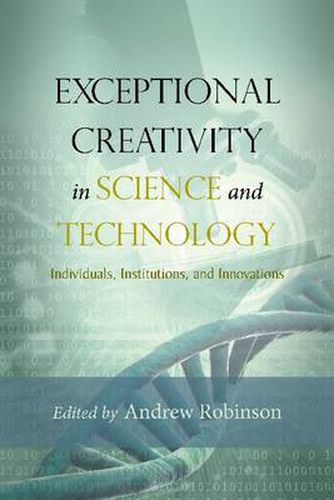Readings Newsletter
Become a Readings Member to make your shopping experience even easier.
Sign in or sign up for free!
You’re not far away from qualifying for FREE standard shipping within Australia
You’ve qualified for FREE standard shipping within Australia
The cart is loading…






In the evolution of science and technology, laws governing exceptional creativity and innovation have yet to be discovered. The historian Thomas Kuhn, in his influential study The Structure of Scientific Revolutions, noted that the final stage in a scientific breakthrough such as Albert Einstein’s theory of relativity–that is, the most crucial stage–was inscrutable. The same is still true half a century later. Yet, there has been considerable progress in understanding many of the stages and facets of exceptional creativity and innovation. In Exceptional Creativity in Science and Technology editor Andrew Robinson gathers together a diverse group of contributors to explore this progress. This new collection arises from a symposium with the same title held at the Institute for Advanced Study (IAS), in Princeton. Organized by the John Templeton Foundation, the symposium had as its chair the late distinguished doctor and geneticist Baruch S. Blumberg, while its IAS host was the well-known physicist Freeman J. Dyson–both of whom have contributed chapters to the book. In addition to scientists, engineers, and an inventor, the book’s fifteen contributors include an economist, entrepreneurs, historians, and sociologists, all working at leading institutions, including Bell Laboratories, Microsoft Research, Oxford University, Princeton University, and Stanford University. Each contributor brings a unique perspective to the relationships between exceptional scientific creativity and innovation by individuals and institutions. The diverse list of disciplines covered, the high-profile contributors (including two Nobel laureates), and their fascinating insights into this overarching question–how exactly do we make breakthroughs?–will make this collection of interest to anyone involved with the creative process in any context, but it will be especially appealing to readers in scientific and technological fields.
$9.00 standard shipping within Australia
FREE standard shipping within Australia for orders over $100.00
Express & International shipping calculated at checkout
In the evolution of science and technology, laws governing exceptional creativity and innovation have yet to be discovered. The historian Thomas Kuhn, in his influential study The Structure of Scientific Revolutions, noted that the final stage in a scientific breakthrough such as Albert Einstein’s theory of relativity–that is, the most crucial stage–was inscrutable. The same is still true half a century later. Yet, there has been considerable progress in understanding many of the stages and facets of exceptional creativity and innovation. In Exceptional Creativity in Science and Technology editor Andrew Robinson gathers together a diverse group of contributors to explore this progress. This new collection arises from a symposium with the same title held at the Institute for Advanced Study (IAS), in Princeton. Organized by the John Templeton Foundation, the symposium had as its chair the late distinguished doctor and geneticist Baruch S. Blumberg, while its IAS host was the well-known physicist Freeman J. Dyson–both of whom have contributed chapters to the book. In addition to scientists, engineers, and an inventor, the book’s fifteen contributors include an economist, entrepreneurs, historians, and sociologists, all working at leading institutions, including Bell Laboratories, Microsoft Research, Oxford University, Princeton University, and Stanford University. Each contributor brings a unique perspective to the relationships between exceptional scientific creativity and innovation by individuals and institutions. The diverse list of disciplines covered, the high-profile contributors (including two Nobel laureates), and their fascinating insights into this overarching question–how exactly do we make breakthroughs?–will make this collection of interest to anyone involved with the creative process in any context, but it will be especially appealing to readers in scientific and technological fields.